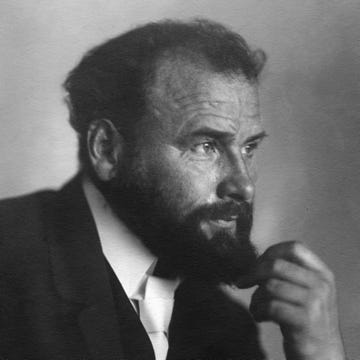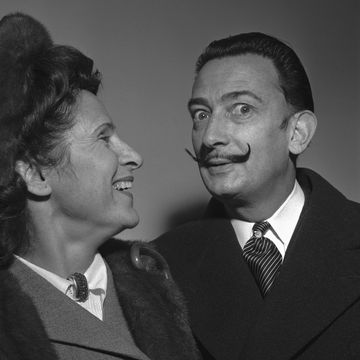(1840-1917)
Who Was Auguste Rodin?
Auguste Rodin was a sculptor whose work had a huge influence on modern art. Unlike many famous artists, Rodin didn't become widely established until he was in his 40s. Developing his creative talents during his teens, Rodin later worked in the decorative arts for nearly two decades. He eventually sculpted the controversial piece "The Vanquished" (renamed "The Age of Bronze"), exhibited in 1877. Among Rodin's most lauded works is "The Gates of Hell," a monument of various sculpted figures that includes "The Thinker" (1880) and "The Kiss" (1882). Rodin didn't live to finish the intricate piece; he died on November 17, 1917, in Meudon, France.
Early Life
Rodin was born François-Auguste-René Rodin on November 12, 1840, in Paris, France, to mother Marie Cheffer and father Jean-Baptiste Rodin, a police inspector. Rodin had one sibling, a sister two years his senior, Maria.
Due to poor vision, Rodin was greatly distressed at a young age. Attending the Petite École, he was unable to see figures drawn on the blackboard and, subsequently, struggled to follow complicated lessons in his math and science courses. Unaware of his imperfect eyesight, a dejected Rodin found comfort in drawing—an activity that allowed the youngster to clearly see his progress as he practiced on drawing paper. (He was nearsighted.) Soon, Rodin was drawing frequently, wherever he could, and whatever he saw or imagined.
By age 13, Rodin had developed obvious skills as an artist, and soon began taking formal art courses. While completing his studies, however, the aspiring young artist began to doubt himself, receiving little validation or encouragement from his instructors and fellow students. Four years later, at age 17, Rodin applied to attend the École des Beaux-Arts, a prestigious institution in Paris. He was gravely disappointed when the school denied him admission, with his application rejected twice thereafter.
Penchant for Realism
Rodin held a career in the decorative arts for some time, working on public monuments as his home city was in the throes of urban renewal. The sculptor also joined a Catholic order for a short time, grieving over the death of his sister in 1862, but he ultimately decided to pursue his art. By the mid-1860s he'd completed what he would later describe as his first major work, "Mask of the Man With the Broken Nose" (1863-64). The piece was rejected twice by the Paris Salon due to the realism of the portrait, which departed from classic notions of beauty and featured the face of a local handyman.
Rodin later worked under fellow sculptor Albert-Ernest Carrier-Belleuse and took on a major project assigned to him in Brussels, Belgium. A fateful trip to Italy in 1875 with an eye on Michelangelo's work further stirred Rodin's inner artist, enlightening him to new kinds of possibilities; he returned to Paris inspired to design and create.
In 1876, Rodin completed his piece "The Vanquished" (later renamed "The Age of Bronze"), a sculpture of a nude man clenching both of his fists, with his right hand hanging over his head. A depiction of suffering amidst hope for the future, the work was first exhibited in 1877, with accusations flying that the sculpture appeared so realistic that it was directly molded from the body of the model.
Famous Sculptures
By the following decade, as Rodin entered his 40s, he was able to further establish his distinct artistic style with an acclaimed, sometimes controversial list of works, eschewing academic formality for a vital suppleness of form. With a large team assisting him in the final casting of sculptures, Rodin thus went on to create an array of famous works, including "The Burghers of Calais," a public monument made of bronze portraying a moment during the Hundred Years' War between France and England, in 1347. The piece, which includes six human statues, depicts a war account during which six French citizens from Calais were ordered by monarch Edward III of England to abandon their home and surrender themselves — barefoot and bareheaded, wearing ropes around their necks and holding the keys to the town and the caste in their hands — to the king, who was to order their execution thereafter. "The Burghers of Calais" is a portrayal of the moment that the citizens exited the town; the group was later spared death due to the request of Queen Philippa. Rodin began working on the monument in 1884, after being commissioned by Calais to create it. However, the piece wasn't unveiled there until more than a decade later, in 1895.
After being commissioned to create an entrance piece for a planned museum (which was never built) in 1880, Rodin began working on "The Gates of Hell," an intricate monument partially inspired by Dante's Divine Comedy and Charles Baudelaire's Les Fleurs du Mal. The monument consisted of various sculpted figures, including the iconic "The Thinker" (1880, meant to be a representation of Dante himself and "Gates"'s crowning piece), "The Three Shades" (1886), "The Old Courtesan" (1887) and the posthumously discovered "Man With Serpent" (1887). Although Rodin wished to exhibit the completed "Gates" by the end of the decade, the project proved to be more time-consuming than originally anticipated and remained uncompleted. (Decades later, curator Léonce Bénédite initiated the reconstruction of the fragmented work for a 1928 bronze casting.) Rodin produced other major sculptures over the ensuing years, including monuments to French literary greats Victor Hugo and Honoré de Balzac.
Death and Legacy
Rodin died on November 17, 1917, in Meudon, France, passing away months after the death of his partner Rose Beuret. Garnering acclaim for more than a century, Rodin is widely regarded as the pioneer of modern sculpture. With samples of his work found around the world, his legacy continues to be studied and deeply admired by fellow artists, experts, scholars and art connoisseurs, as well as those with an untrained eye.
The Rodin Museum was opened in August 1919 in a Paris mansion that housed the artist's studio during his final years. After several years of reconstruction, the museum was reopened in 2015 on Nov. 12, Rodin's birthday. With much of its revenue supplied by the sale of bronze casts made from original molds, the space also features unearthed pieces from Camille Claudel, who was Rodin's lover/muse and worked as his assistant for some time. Their relationship is said to have inspired many of the artist's more overtly amorous works, including 1882's "The Kiss."
QUICK FACTS
- Name: Auguste Rodin
- Birth Year: 1840
- Birth date: November 12, 1840
- Birth City: Paris
- Birth Country: France
- Gender: Male
- Best Known For: French sculptor Auguste Rodin is known for creating several iconic works, including 'The Age of Bronze,' 'The Thinker,' 'The Kiss' and 'The Burghers of Calais.'
- Industries
- Sculpture
- Astrological Sign: Scorpio
- Schools
- École des Beaux-Arts
- Petite École
- Nacionalities
- French
- Death Year: 1917
- Death date: November 17, 1917
- Death City: Meudon
- Death Country: France
Fact Check
We strive for accuracy and fairness.If you see something that doesn't look right,contact us!
CITATION INFORMATION
- Article Title: Auguste Rodin Biography
- Author: Biography.com Editors
- Website Name: The Biography.com website
- Url: https://www.biography.com/artists/auguste-rodin
- Access Date:
- Publisher: A&E; Television Networks
- Last Updated: August 7, 2020
- Original Published Date: April 2, 2014
QUOTES
- Nothing is a waste of time if you use the experience wisely.
- To the artist, there is never anything ugly in nature.
- Sculpture is the art of the hole and the lump.












